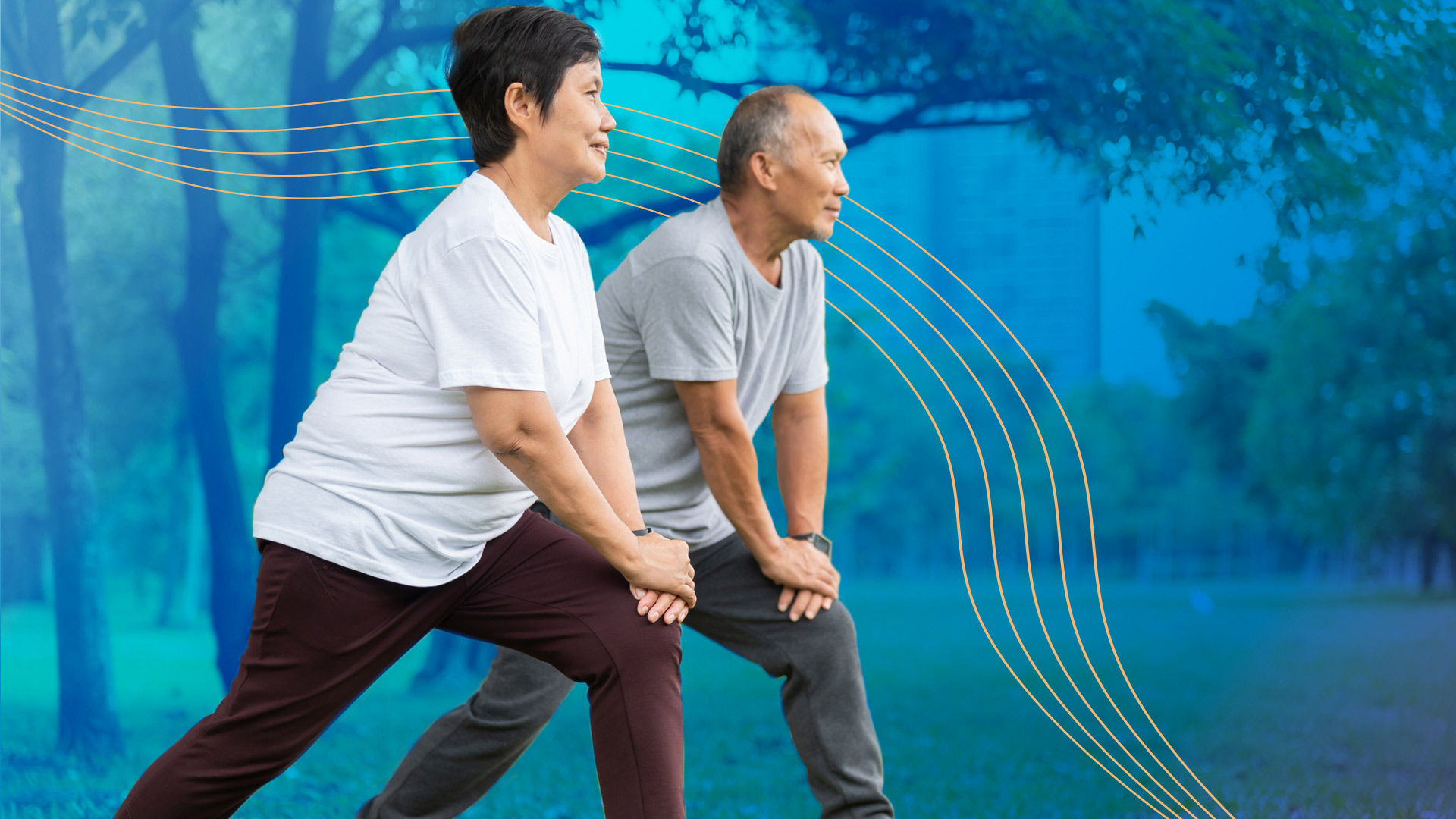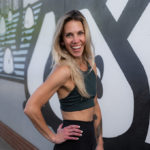
Is ATG Training Right For You?

Do you have pain or difficulty in one or more of the following?:
- Going up and down stairs
- Squatting or bending all the way to the floor
- Playing games or other physical activities
- Jumping
If you answered “yes” to any of these, it might be time to start thinking “knees over toes.”
One of the most commonly used rules of exercise is “don’t let your knees exceed your toes” in squats and lunges. Most people have learned or practiced this over time, yet most adults and youth suffer from pain or immobility! Relief might come from turning that advice on its head using ATG training.
Find What You Need
ATG training is the brainchild of Ben Patrick, the “Knees Over Toes” guy. After overcoming years of knee injury and pain at an early age, Patrick made it his mission to help others lessen pain and gain mobility in their body. He has thousands of testimonials, ranging from young athletes to the elderly, who have disproved this once “golden rule” of fitness. Patrick developed the “Athletic Truths Group,” or ATG, to debunk such misconceptions. He has a compelling story and journey that gave him a passion for helping others overcome injury, as he did.
At first glance, his school of thought could sound conspiratorial or a hoax; however, there’s much scientific evidence dating back to ancient times to prove otherwise.
Background on ATG
Patrick’s dream at an early age was to play basketball like Michael Jordan; however, his body wasn’t on the same page. At the age of 14, he was so stiff that his teammates nicknamed him “Old Man.” And, by high school, those dreams were shattered by injury and (what was thought to be) career-ending surgery. He finished high school unable to dunk a basketball and had no college scholarships or interest from coaches.
He made it his mission to study and learn everything he could to bulletproof his knees. He found a man named Charles Poliquin and began learning everything he could from him and others.
“The athlete whose knees can go farthest and strongest over his or her toes is the most protected.” Everything I had been taught up to this point by dozens of trainers and physical therapists was very clear: NO KNEES OVER TOES – but when I read this statement, I immediately knew it was true.
After much dedicated time to a new training regiment, he miraculously met his goal of strengthening and repairing his knees. By the age of 21, he went on to play college basketball as the starting point guard and helped his team win back-to-back Conference Championships. Those who knew his story were curious about how he did it, so he developed his own program and began training others in his methods.
Now, he has testimonials from countless people (including his mother and podcaster Joe Rogan), ranging in age, background, and types of injuries/issues.
Traditional vs. ATG
Traditionalists could argue this program is innovative or forward thinking. However, actual science would show that the human body is designed and created for this type of movement.
The Basic Human Movements: Pull, push, twist, squat/lunge, gate, and hinge are all performed in the program.
Before the invention of chairs, humans would sit in a squat position. This form was not in the modern practice of “90 degrees, knee over ankle, hips in line with knees,” but with toes slightly pointed out, hips open, and bottom closer to the ground. Sitting in a squat position was a restful position. Once humans began to sit in chairs and at desks most of the day, their bodies became tighter from age five through retirement, and posture suffered. The ability to perform a basic human squat, in particular, the way it was during the early ages, has declined significantly. Man has created compensations and shifted basic movement patterns, decreasing our ability to move the way we are intended naturally.
In addition, human movement patterns have become increasingly slower, more linear, and favor forward moving (frontal movement). Yet, it’s dynamic and explosive movements, pushing and pulling, utilizing both planes of the body that aided in survival. Hunting, gathering, and running from wild animals are no longer necessary in civilized countries. It became necessary to exercise as recreation to ward off disease and increase longevity and quality of life. Unfortunately, however, the most common forms of exercise: running, walking, and cycling, are typically repetitive, forward-moving, and lack the fundamental principles of pull, push, twist, squat, gate, and hinge for both forward and backward movement.
ATG Training In Action
I’ve worked in fitness for 15 years, and it wasn’t until a client specifically asked for this training that I began researching it. Backstory on Tom he had been (inconsistently) training with me for several years. During this time, he always had poor form and restricted movement, and I gave him all the “right” cues I learned in my education as a personal trainer.
Tom is 49 years old and was post-surgery from an injury to his plantar. He works in the Nascar industry, and several of his friends (including professional drivers) were raving about their successes from ATG Training. Curious, he asked me to implement it into his consistent, regular programming.
We began with the modified versions of the movements that ATG uses. Within a month, we both saw dramatic results. His pain decreased, and the quality of movement increased significantly. As his strength and range of motion increase, we’ve adapted the amount of assistance or weight needed for each exercise.
He’s noticed positive changes in his tennis matches and golf games and can now jump to touch a 10-foot rim for the first time in 15 years (he’s only 6’0″). His goal is to dunk a ball, which should undoubtedly happen soon!
Basic ATG Principles
Don’t Work Through Pain
Find the level you are at, and work from there. The training is not complex or risky but relatively safe and accessible. Work “From the Ground Up” . Slower is better, increasing speed over time
Sled At Least As Much Backward As Forward
You heard that right, SLED – or pushing a training sled like a football player. This exercise is surprisingly safer than most movements because the resistance in itself is what prevents someone from going too fast. Unlike most equipment, only you can move the sled, it never overcomes you. Even 82-year-olds can use it!
Perfect Form Won’t Happen At the Start, But Over Time
Some of the most common ways to spot “poor form” in strength training are:
- Rounding or arching in the back and losing a straight posture
- Knees/ankles caving in or out (pronation/supination)
- Flaring out of the elbows
- Poor neck positioning
As your strength builds with ATG Training, your posture, form, and adeptness will improve. Also, you may find that several of the ATG exercises are actually less painful for people with an injury or inhibited mobility than the traditional ways of doing them. For example, squatting with the heels slightly lifted off the ground (standing on a set of dumbbells- balls of the feet on the floor, heels up) may feel more comfortable.
Beginning the program with little or no weight to build strength and form first is essential. Slowly adding in “load” or performing with weighted equipment while maintaining proper form will lead to more success.
ATG Is Not A Medical Treatment, nor a Diagnosis
What it IS is a movement to help others lessen pain and work through injury. It works with a standard set of guidelines and practices to focus on ability and decreasing pain in the body.
Basic ATG Exercises
Sled Pull/Push
In this exercise, walking forward and back with resistance is critical. An alternative would be to walk forward/backward on a treadmill with the power off. Disclaimer, this could mess up the motor of a treadmill, so not recommended if you want to keep it in good condition.
Tibialis Raise
Back flat against a wall; place your feet a couple of feet away from the wall. Lift your toes, keep your weight on your heels, and slowly lower down. Keep consistent slow reps.
Patrick Step
Facing down a set of steps or curb, standing on one foot, hovering the other. Bend the knee of the standing leg and lower the hovering foot and tap the heel on the next step down, then straighten back up to standing.
Knees Over Toes Calf Raise
Sitting on a bench, place the balls of your feet on a set of dumbbells, and slowly raise your heels up and down. (Option to hold dumbbells/plates on top of your knees to add “load”).
ATG Split Squat
Similar to a traditional lunge but performed with the heel on a raised surface and the knee passing the toes.
Monkey Feet Knee Raise
Standing single leg knee raises with weight strapped to the foot.
Still wondering if ATG Training is right for you? The answer is this: ATG Training is for everyone who wants to lessen pain and increase mobility! Visit ATG Online Coaching to find which program works best for you.
Content on this site is for reference and information purposes only. Do not rely solely on this content, as it is not a substitute for advice from a licensed healthcare professional or personal trainer. Aging.com assumes no liability for inaccuracies. Consult with your doctor before beginning any new exercise program.


